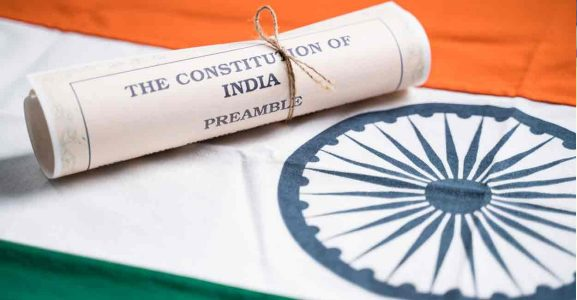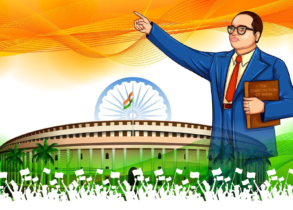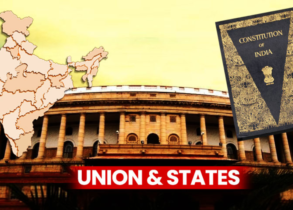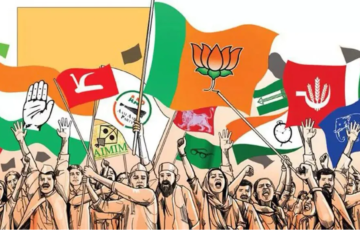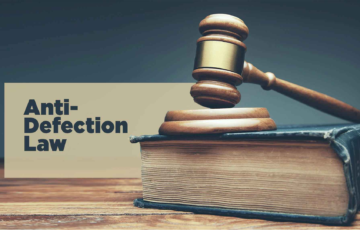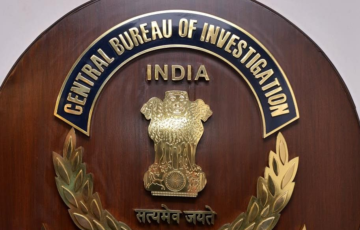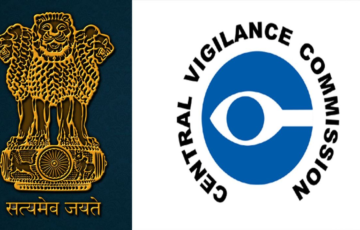PREAMBLE
Introduction
- Preambles are often included in all Constitutions in order to aid in understanding the ideas and objectives of the legal instrument. Although there may be slight, sometimes considerable, differences in the length, structure, content, and form of the Preamble of many Constitutions. Simply put, a preamble is the first section of an act, legislation, bill, or other document. It provides a concise summary of the document’s precise intentions.
- The preamble of the Indian Constitution serves as an introduction to the document, which also contains a number of laws and rules intended to govern the citizens of the nation. It explains the source of the residents’ motivation and their slogan.
Historical
- Initial Crafting of Aims and Objectives: The Constituent Assembly’s first task was to establish the fundamental principles and objectives that would underpin the Constitution of India. These principles were intended to reflect the democratic ideals that the Constitution would uphold.
- Expert Committee and Objectives Resolution: In 1946, an expert committee appointed by the National Congress drafted a “declaration” outlining the Constitution’s objectives. Based on this draft, Jawaharlal Nehru presented a resolution known as the “Objectives Resolution” before the Constituent Assembly on December 13, 1946. This resolution was extensively debated and was adopted by the Assembly on January 22, 1947.
- Contents of the Objectives Resolution: The Objectives Resolution declared India as an independent sovereign republic governed by the Constitution. It outlined the formation of a “Union of India” comprising territories previously under British and indirect British rule. These territories would become autonomous units with powers derived from the people. The resolution emphasized justice, equality, and freedom for all citizens, protection for minorities and disadvantaged groups, sovereignty over land, sea, and air, and India’s commitment to promoting peace and welfare globally.
- Spiritual Preamble: The Objectives Resolution was described as a “spiritual preamble” that would infuse the entire Constitution with its principles and aspirations.
- Drafting of the Preamble: B.N. Rao subsequently settled a draft of the Preamble which began with “We, the people of India, seeking to promote the common good, do hereby, through our chosen representatives enact, adopt and give to ourselves this constitution.” The Union Constituent Assembly decided that the Preamble should be based on the Objectives Resolution.
- Postponement and Redrafting: Nehru suggested postponing the drafting of the Preamble until after the Partition. The Drafting Committee decided to limit the Preamble to the essential features of the new India and its socio-political goals, consistent with the Objectives Resolution.
- Finalization of the Preamble: After numerous sittings and debates, a redrafted Preamble was presented, aligning with the Constitution’s final version. Amendments were made, including the replacement of “Sovereign Indian Republic” with “Sovereign Democratic Republic,” replacing “unity of the nation” with “unity and integrity of the nation,” adding the term “fraternity,” and removing the clause related to safeguards for minorities and backward classes.
- Spirit of the Objective Resolution: The Preamble was crafted to capture the language and spirit of the Objectives Resolution to a significant extent.
Text of The Preamble
“We, THE PEOPLE OF INDIA, having solemnly resolved to constitute India into a SOVEREIGN SOCIALIST SECULAR DEMOCRATIC REPUBLIC and to secure to all its citizens:
|
- The Preamble to the Indian Constitution, adopted on November 26, 1949, is a significant and symbolic declaration that outlines the foundational principles and aspirations of the Constitution. Although drafted after the main body of the Constitution, it plays a crucial role in setting the tone for the entire document. The Constitution came into effect on January 26, 1950, which was chosen as the commencement date to mark India’s transition to a sovereign republic, aligning with the values articulated in the Preamble. Together, these dates signify India’s commitment to democracy, justice, liberty, equality, and fraternity as it embarked on its journey as an independent nation.
Components of the Preamble
- The Preamble of the Indian Constitution contains important components that define the essence of the nation and its governance. Let’s break down these components:
- We the people of India: This opening phrase signifies that the ultimate authority in India rests with its citizens. It emphasizes that the Constitution is a product of the collective will and choice of the Indian people. Citizens have the power to elect their representatives and express their opinions and criticisms.
- In the case of Union of India v. Madan Gopal Kabra (1954), the Supreme Court affirmed that the Indian Constitution’s source is the people of India, as stated in the Preamble.
- Sovereign: The Preamble declares India as a sovereign state. Sovereignty means that India has independent authority and control over its affairs. No external authority or foreign power can dictate terms to the country. It highlights that the Indian legislature can make laws within the boundaries defined by the Constitution.
- Sovereignty can be divided into external sovereignty (independence in international relations) and internal sovereignty (the relationship between the state and its citizens).
- In the case of Synthetic & Chemicals Ltd. v. the State of Uttar Pradesh (1989), the Supreme Court clarified that ‘sovereign’ means the state has the authority to govern everything within the constraints set by the Constitution. This case distinguished between external and internal sovereignty, emphasizing that a country must be sovereign to have its own constitution.
- Socialist: The word ‘Socialist’ was added to India’s Constitution in 1976 during a period called the emergency. It’s all about something called “democratic socialism,” which means the government tries to make sure everyone in the country is treated fairly in terms of money, politics, and society.
- Indira Gandhi, who was a big leader in India, explained socialism as giving everyone an equal chance at a good life. She said it’s a bit like democracy where people have different ideas, but in India, socialism is about making life better for everyone.
- In a court case called Excel Wear v. Union of India in 1978, the judges said that adding the word ‘socialist’ means it’s okay for the government to take control of important industries. But they also said that socialism shouldn’t forget about people who own private businesses.
- In another case, D.S. Nakara v. Union of India in 1982, the judges said the main point of socialism is to make sure people have a decent life from the day they are born to the day they die.
- Secular: The word ‘Secular’ was also added to the Constitution in 1976. It means that the government doesn’t have a favorite religion, and people can choose their own religion freely.
- People in India can follow any religion they want, and the government has to treat all religions the same and with respect. It’s not allowed to discriminate against anyone because of their religion, caste, or other reasons.
- Different parts of the Constitution like Article 14, which talks about equality, and Articles 15 and 16, which say you can’t discriminate, support this idea of secularism.
- In a big case called S.R. Bommai v. Union of India in 1994, the judges said that secularism is a very important part of the Constitution.
- In another case, Bal Patil v. Union of India in 2005, the judges said that all religions and religious groups should be treated the same way. India is a secular country, which means people can pick their religion, and the government doesn’t have its own religion.
- In the case of M.P. Gopalkrishnan Nair v. the State of Kerala in 2005, the judges explained that being a secular state is different from being an atheist society. It means the government allows all religions and doesn’t disrespect any of them.
- Democratic: The word ‘Democratic’ comes from Greek words, ‘demos’ which means ‘people,’ and ‘kratos’ which means ‘authority.’ So, when we say India is a democratic country, it means the government is formed by the people themselves. In a democracy, people have the power to choose their leaders through elections at different levels, like national, state, and local. Every person, no matter their background, has the right to vote. This means that in a democratic government, every citizen has a say in how things are run, either directly or through the people they choose.
- In the case of Mohan Lal v. District Magistrate of Rai Bareilly in 1992, the court said that democracy is about how people elect their representatives to form a government. The fundamental idea is to treat everyone the same way, whether they belong to the majority or the minority. In a democracy, every citizen is equal before the law.
- In the case of Union of India v. Association of Democratic Reforms in 2002, the court emphasized that for democracy to work well, people need to be aware and informed. Fair elections are crucial for a democracy to thrive. Democracy also aims to improve people’s lives by upholding human dignity, equality, and the rule of law.
- Republic: India is a republic, which means that our head of state is not a hereditary monarch, like a king or queen. Instead, the head of state is elected by the people. The word ‘Republic’ comes from the Latin term ‘res publica,’ which means public property or commonwealth. In a republic, the power to choose the head of state for a fixed term rests with the people. So, when we say India is a republic, it signifies that the country is governed by the people’s will, rather than by birthright.
- This term, as stated in our Preamble, firmly signifies that the country will be run according to the wishes of the people, and not by the whims of a select few. Every law, action, and decision will prioritize the will of the people of the country.
- Justice, Liberty, Equality, and Fraternity: The Preamble of the Indian Constitution emphasizes the commitment to securing ‘justice,’ ‘liberty,’ ‘equality,’ and ‘fraternity’ for all citizens of the country.
- Justice:
- Social Justice: This means creating a society where there is no discrimination based on factors like caste, religion, gender, and more. It aims to ensure that everyone has an equal social status and that the Constitution works to eliminate all forms of exploitation that harm equality in society.
- Economic Justice: Economic justice ensures that people are not discriminated against based on their wealth, income, or economic status. It means that wealth should be distributed based on a person’s work and contribution, rather than other factors. Every person should be paid fairly for their work, and everyone should have opportunities to earn a living.
- Political Justice: Political justice guarantees that all people have equal, free, and fair rights to participate in political activities without any discrimination. This means that everyone has an equal right to access political offices and be part of the government’s decision-making processes.
- Liberty: Liberty includes the freedom of thought, expression, belief, faith, and worship. It ensures that individuals have the freedom to think, express their thoughts, believe in what they want, and practice their religion without interference.
- Equality: Equality means that every person should have the same status and opportunities. It ensures that no one is treated unfairly or discriminated against based on factors like caste, gender, religion, or other characteristics.
- Fraternity: Fraternity aims to maintain the unity and integrity of the nation. It includes a commitment to protect the dignity of every individual. In other words, it emphasizes the importance of people coming together as a unified nation and respecting the dignity and rights of one another.
Preamble as an aid in interpretation of the Constitution
- The Supreme Court of India has established that the Preamble is an integral part of the Constitution. However, it’s important to note that the Preamble does not have the authority to override the explicit provisions laid out in the Indian Constitution. Instead, it serves as a valuable tool for interpreting and understanding the purpose of specific constitutional provisions, especially when the terms used in those provisions are open to multiple interpretations or are ambiguous.
- In cases where the meaning of words or phrases in the Constitution is unclear, the Preamble can provide guidance and assist in interpreting the constitutional intent. It offers a broader perspective on the fundamental principles and objectives that the Constitution seeks to achieve.
- Justice Sikri, in the landmark Kesavananda Bharati case, emphasized the immense importance of the Preamble. He stated that the Preamble holds a vital role, and the Constitution should be read and understood in light of the grand and noble vision expressed in the Preamble.
- Moreover, the Preamble has been invoked to impose implied limitations on the Parliament’s power to amend the Constitution under Article 368. This means that while Parliament has the authority to amend the Constitution, it cannot do so in a way that fundamentally alters or goes against the core principles and objectives outlined in the Preamble.
- In the case of Randhir Singh v. Union of India (1982), the Supreme Court considered the key words of the Preamble when making its decision. It held that Article 39(d) of the Constitution encompasses the principle of “equal pay for equal work,” which is a constitutional right applicable to all, regardless of gender. This decision was in line with the Preamble’s commitment to providing equality of status and opportunity to all citizens.
Amendment to the Preamble
- The question of whether the Preamble of the Indian Constitution can be amended by the Parliament under the amending powers outlined in Article 368 was addressed by the Supreme Court in the Kesavananda Bharati case. The court held that, since the Preamble is an integral part of the Constitution, it can be amended. However, there are limitations on such amendments. The Preamble cannot be amended in a way that destroys the basic features of the Constitution. The court emphasized that the Constitution’s foundation is largely based on the fundamental elements embodied in the Preamble. Removing or altering these elements would undermine the Constitution’s purpose and objectives. The amending power of the Parliament does not grant it the authority to disrupt the fundamental and essential characteristics of the constitutional framework. Doing so would essentially dismantle the entire Constitution.
- Since the enactment of the Indian Constitution, it has been amended multiple times. The Constitution is considered a living document, and amendments are made to accommodate the evolving needs of society. However, there has been only one instance of the Preamble being formally amended, which occurred in 1976.
- The 42nd Amendment Act, 1976, introduced changes to the Preamble. Specifically, it added the words ‘Socialist,’ ‘Secular,’ and ‘Integrity’ to the Preamble to emphasize economic justice, non-discrimination, and national unity.
- The key changes made by the 42nd Amendment Act, 1976, are as follows:
- Addition of ‘Socialist’ and ‘Secular’: These terms were inserted between ‘Sovereign’ and ‘Democratic’ in the Preamble. This amendment aimed to explicitly highlight the commitment to socialist and secular principles in the Constitution.
- Change from ‘Unity of the Nation’ to ‘Unity and Integrity of the Nation’: The term ‘Unity of the Nation’ in the Preamble was modified to ‘Unity and Integrity of the Nation’ to stress the importance of maintaining both the unity and integrity of India.
- It’s worth noting that even before this formal amendment, the concept of secularism was present in the Constitution, although not explicitly mentioned in the Preamble. The Supreme Court, in the R. Bommai case, recognized that the Constitution contained the concept of secularism within its provisions, even before the 1976 amendment.
Is the Preamble a part of the Constitution?
- The status of the Preamble in the Indian Constitution has been a subject of debate and legal interpretation. Initially, there was some ambiguity regarding whether the Preamble is considered a part of the Constitution or not.
- In the early stages, the view taken by the apex court was that the Preamble was not considered an integral part of the Constitution. This perspective was influenced by the Berubari Case.
- However, this stance changed, and the matter was definitively settled in the landmark Kesavananda Bharati case. In this case, the Supreme Court of India held that the Preamble is indeed a part of the Constitution. The court emphasized the significance of the Preamble and its role as the soul and key to the Constitution. This decision clarified that the Preamble is an essential and intrinsic component of the Indian Constitution.
- So, as per the Kesavananda Bharati case, the Preamble is considered an integral and inseparable part of the Indian Constitution. It sets forth the ideals and principles upon which the Constitution is founded and reflects the objectives that the Constitution aims to achieve.
Conclusion
- In conclusion, the Preamble of the Indian Constitution serves as a profound and foundational statement that encapsulates the essence and guiding principles of the Constitution. It reflects the aspirations, ideals, and vision of the framers of the Constitution for a just, democratic, and inclusive society. The Preamble declares India as a sovereign, socialist, secular, and democratic republic committed to justice, liberty, equality, and fraternity for all its citizens.
- Over time, the interpretation of the Preamble by the Supreme Court has solidified its status as an integral and unamendable part of the Constitution. It plays a vital role in guiding the interpretation of constitutional provisions and ensuring the Constitution’s core values are upheld.
- The Preamble represents the soul of the Constitution, serving as a beacon that guides the nation on its path towards achieving the goals of justice, liberty, equality, and fraternity. It is a testament to the enduring commitment of the Indian people and their leaders to building a just and inclusive society where every citizen’s rights and dignity are protected.
UPSC PREVIOUS YEAR QUESTIONS
1. ‘Economic Justice’ as one of the objectives of the Indian Constitutional has been provided in: (2013)
1. the Preamble and the Fundamental Rights
2. the Preamble and the Directive Principles of State Policy
3. the Fundamental Rights and the Directive Rights and the Directive Principles of State Policy
4. None of the above
2. Which one of the following objectives is not embodied in the Preamble to the Constitution of India? (2017)
(a) Liberty of thought
(b) Economic liberty
(c) Liberty of expression
(d) Liberty of belief
3. The mind of the makers of the Constitution of India is reflected in which of the following? (2017)
(a) The Preamble
(b) The Fundamental Rights
(c) The Directive Principles of State Policy
(d) The Fundamental Duties
4. Which one of the following reflects the most appropriate relationship between law and liberty? (2018)
1. If there are more laws, there is less liberty.
2. If there are no laws, there is no liberty.
3. If there is liberty, laws have to be made by the people.
4. If laws are changed too often, liberty is in danger.
5. In the context of polity, which one of the following would you accept as the most appropriate definition of liberty? (2019)
(a) Protection against the tyranny of political rulers
(b) Absence of restraint
(c) Opportunity to do whatever one likes
(d) Opportunity to develop oneself fully
6. The Preamble to the Constitution of India, is: (2020)
1. part of the Constitution but has no legal effect
2. not a part of the Constitution and has no legal effect either
3. a part of the Constitution and has the same legal effect as any other part
4. a part of the Constitution but has no legal effect independently of other parts
7. What was the exact constitutional status of India on 26th January, 1950? (2021)
1. A democratic Republic
2. A Sovereign Democratic Republic
3. A Sovereign Secular Democratic Republic
4. A Sovereign Socialist Secular Democratic Republic=
8. Discuss each adjective attached to the word ‘Republic’ in the preamble. Are they defendable in the present circumstances stances? (2016)

